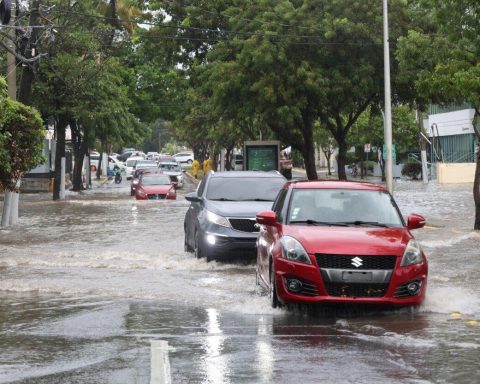ANRD executives said that the route through the Panama Canal has been stabilized, which is why freight rates are down.
Maritime freight rates have begun to decline and this trend is expected to continue in the coming months, said the directors of the Association of Shipowners of the Dominican Republic (ANRD).
By participating in Today’s Economic Breakfast, Odile Miniñovice president; Jaak Rannik, president; and Cristyan Peralta, member of the board, explained the factors that have influenced this decline.
They clarified that the cost of maritime freight is closely linked to multiple factors, including the operating costs of ships (crew, fuel and others), the configuration of maritime routes, as well as climatic, economic, political and military pressures that may affect these routes.
They considered that maritime trade has been affected by the war in the Red Sea, which has strongly redirected traffic through the Suez Canal and the Bad el-Mandeb Strait, mainly towards the Cape of Good Hope, south of Africa, and by the reduction of transit capacity in the Panama Canal and political tensions between the United States and China.
Another aspect that affects maritime trade is the increase in the volume of goods in preparation for the high season due to commercial events such as back to school, Black Friday and Christmas. They pointed out that the route through the Panama Canal has stabilized, which is why freight rates are on a downward trend.
They recalled that last year the Panama Canal restricted the number of ships crossing and freight rates increased, but the situation has been normalizing.
At the Panama Canal, they said, there was not enough water to keep the locks working, because every time one was opened, water was lost.
They pointed out that in the Red Sea, the Houthis from Yemen launch missiles at ships crossing it, which has forced the routes that cross the Suez Canal to go around Africa.
During the Covid-19 pandemic, freight rates from Asia to the region increased by 800%. This occurred between the end of 2020 and 2022, but in 2023 prices fell below 2019 prices, they said.
They said that the routes affected by the increase in freight, both during the pandemic and at present, are the long ones, which cross the Pacific and Atlantic oceans. They stressed that the routes to the United States have not been affected, because they have not been impacted by the war conflicts and do not have to go through the Panama Canal.
“Freight rates between the Dominican Republic and the United States, in the midst of the pandemic, did not increase by more than 40%,” said Peralta. He pointed out that connectivity and trade with the United States have never been affected at any time.
He said that the average price of a strap from the country to the United States is around US$3,500, although if it is refrigerated or a dangerous product, the cost of maritime transport will be higher. He pointed out that Donald Trump’s victory would represent a risk for bilateral trade between the United States and China, because he has announced that he would increase tariffs on products coming from China.
This situation has led US companies to place many purchase orders in advance, to avoid a critical situation if Trump wins the election.
Nearshoring is a reality
Due to the logistical facilities offered by the country, many companies are already moving part of their production to the Dominican Republic, taking advantage of nearshoring, highlighted the directors of the Association of Shipowners of the Dominican Republic (ANRD).
They pointed out that today there are multiple production lines that have been moved from China, Europe and other regions of the world to be manufactured in the Dominican Republic, which has led to an increase in exports and the country’s global reputation.
They noted that the country has good maritime and air connectivity, excellent infrastructure, political stability and a good relationship with the United States, which favors nearshoring,
They considered that the Dominican Republic is in a very favorable historical moment for nearshoring to grow.


















